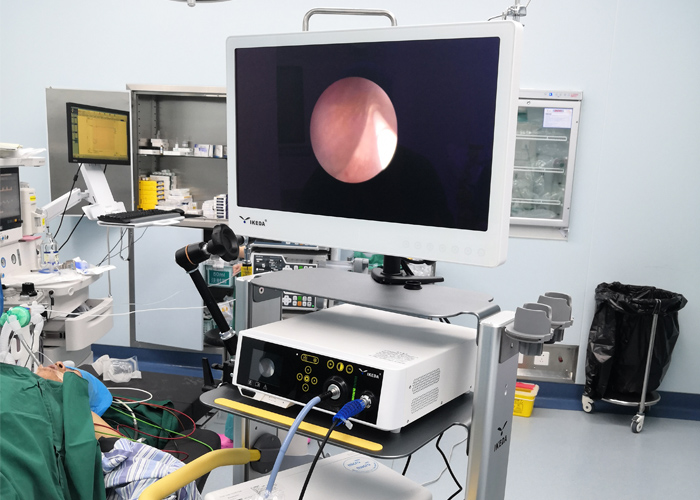Percutaneous nephrolithotomy is a modern surgical minimally invasive technique for lithotripsy and lithotripsy in vivo by nephrolithotomy through the skin-renal channel (a channel that penetrates through the skin into the renal pelvis and calyx).

Indications
1. All kidney stones that require open surgical intervention, such as single and multiple stones, staghorn stones; residual and recurrent stones after open surgery; stones that cannot be crushed by extracorporeal shock waves and that fail to be treated.
2. Stones above the 4th lumbar vertebra in the upper ureter with heavier obstruction.
3. Upper ureteral calculus polyp wrapping and ureteral tortuosity, ineffective extracorporeal shock wave lithotripsy or failure of ureteroscopic surgery.
4. Kidney stones in special patients, such as kidney stones in children and obese patients: kidney stones combined with ureteropelvic junction stenosis; solitary kidney combined with stone obstruction, etc.
Contraindications
Patients with systemic hemorrhagic tendency, ischemic heart disease, and severe respiratory insufficiency, those with a distance between the waist and the kidney exceeding 20 cm, and it is inconvenient to establish a percutaneous renal channel, those with high kidneys accompanied by splenomegaly or hepatomegaly, renal tuberculosis, uncorrected Diabetes, hypertension, acute intrarenal or perirenal infection, severe kyphosis, etc.
The steps of percutaneous nephrolithotomy are as follows: the patient is placed in a prone position, a small hole of about 1 cm can be established on both sides of the patient's waist, and the kidney and renal pelvis can be punctured through this hole to establish a channel between the skin and the renal pelvis. Expand along this channel and enter a nephroscope with a length of about 16-22 cm. Through the nephroscope, a holmium laser, optical fiber, etc. can be inserted for stone crushing. The debris of the stone can then be flushed out of the body through this channel.
Precautions
1. Correctly grasp the operation process of various lithotriptors, adjust various working parameters, and ensure the normal use of surgery.
2. The perfusion liquid should be warmed to 37℃~40℃ before use. Keep warm to avoid hypothermia.
3. Pay attention to aseptic operation.
4. When in the prone position, pay attention to maintaining the patient's respiratory function, protect the trachea carina, put a soothing stick on the head and chin, and keep the eyes from being compressed. Pay attention to the functional position of the ankle joint, and keep the intravenous infusion unobstructed.